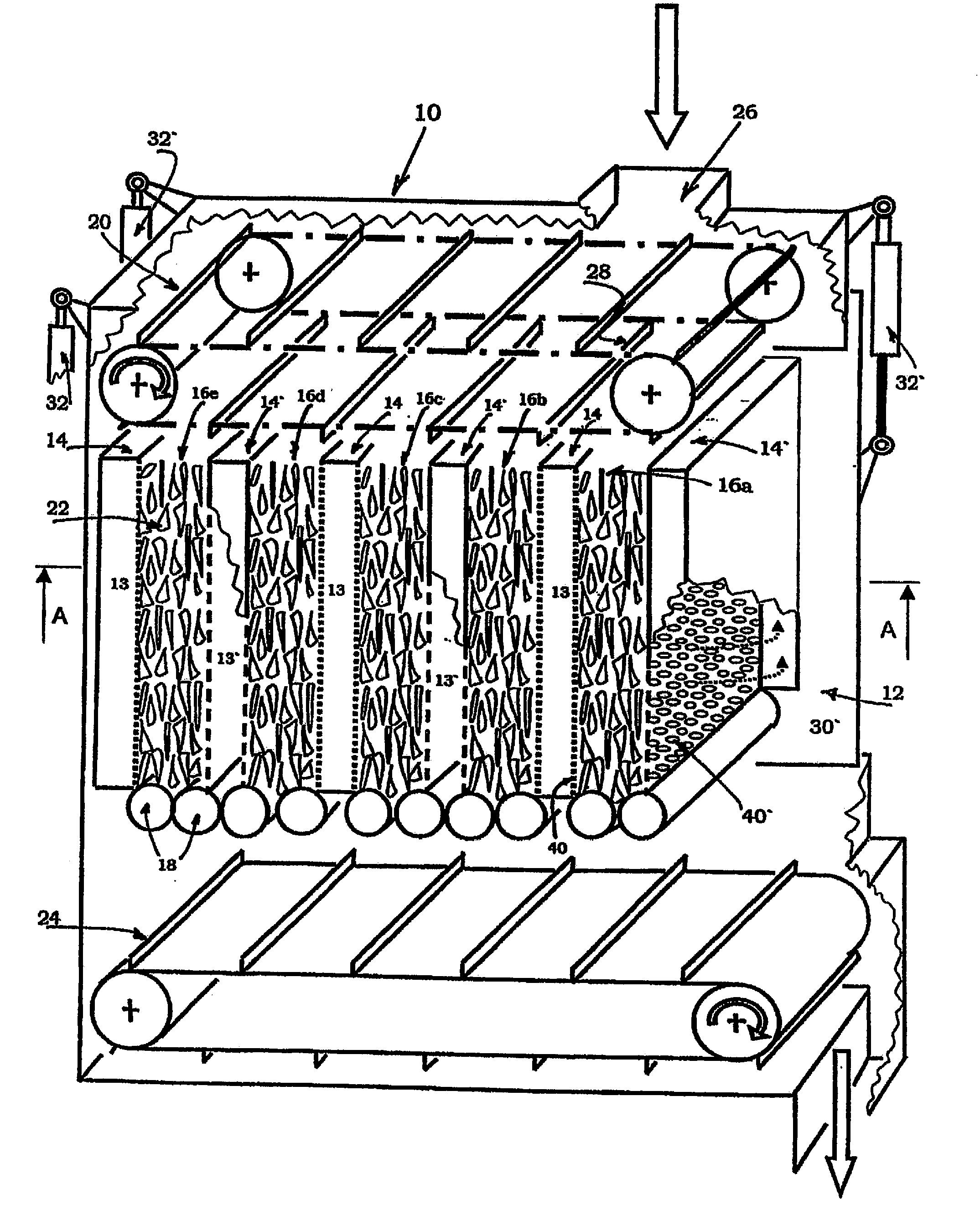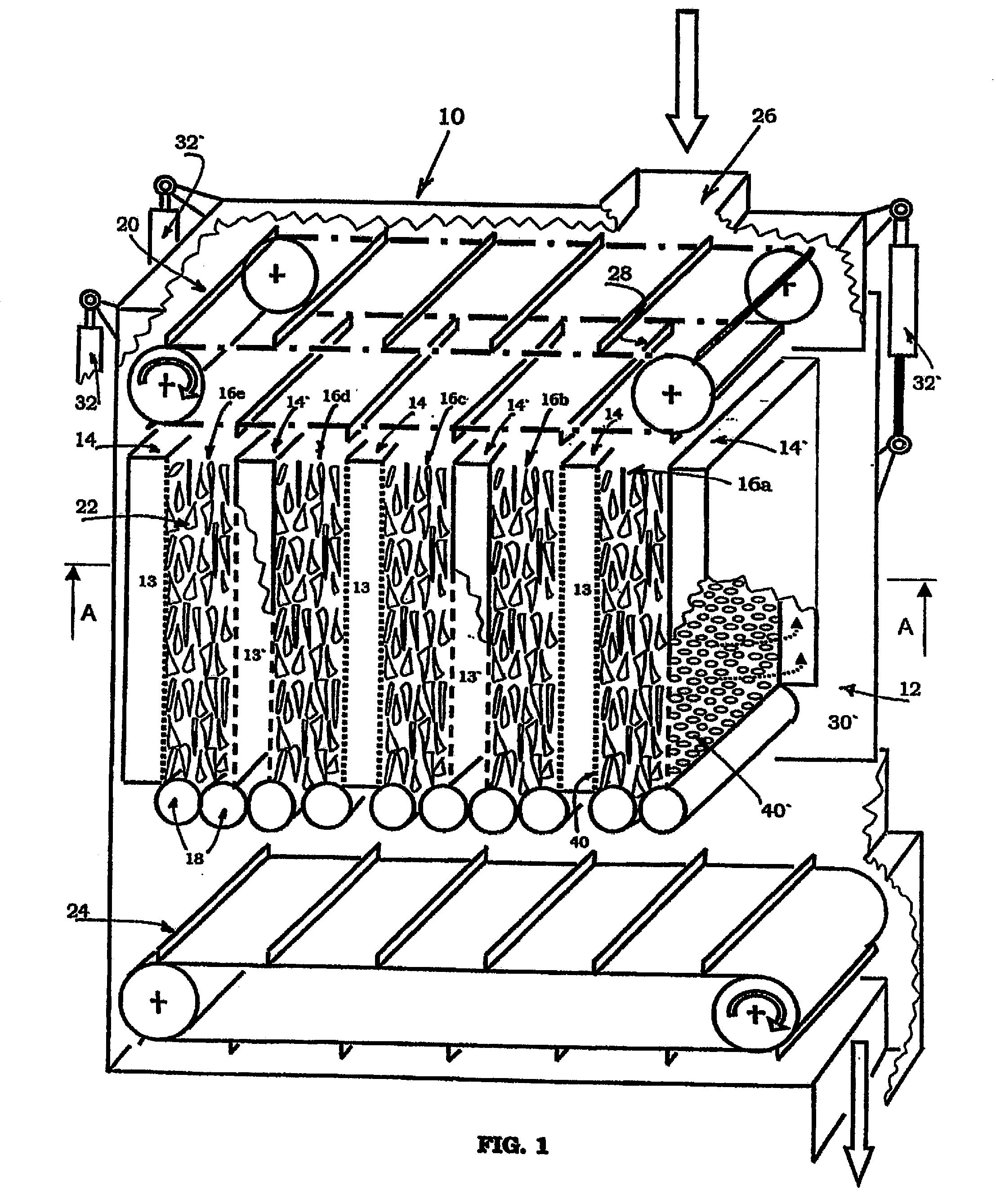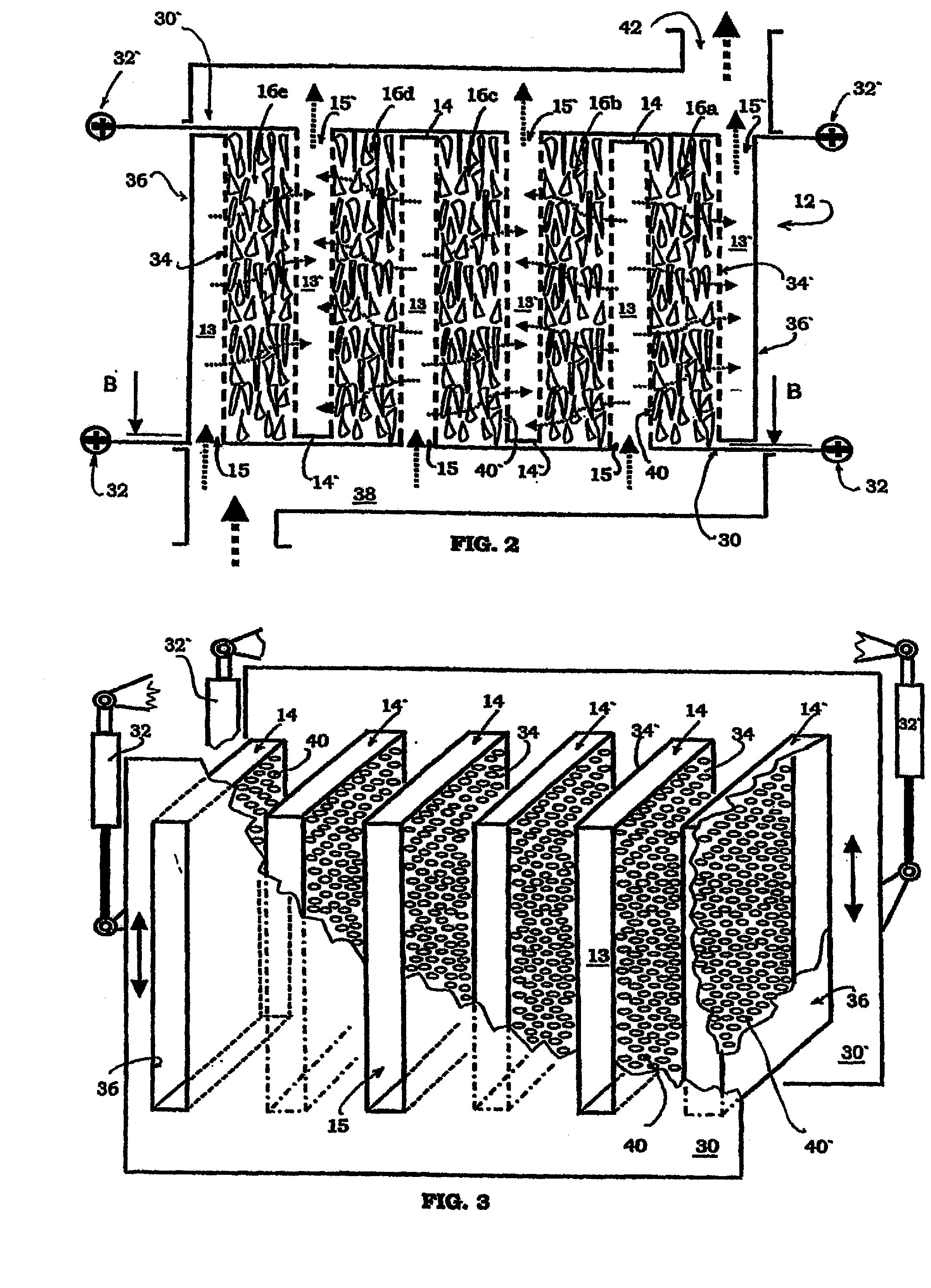Method of and an Apparatus for Drying Solid Materials and Mixtures of Solid Materials
a technology of solid materials and apparatuses, which is applied in the direction of drying solid materials, drying machines, lighting and heating apparatus, etc., can solve the problems of long retention time, inability to at least substantially allow the material to be dried to flow to the gas volume between the wall surfaces, and large size of the dryer
- Summary
- Abstract
- Description
- Claims
- Application Information
AI Technical Summary
Benefits of technology
Problems solved by technology
Method used
Image
Examples
Embodiment Construction
[0051]FIGS. 1 and 2 illustrate a drying apparatus, in other words a dryer 10 for solid materials in accordance with the invention. A dryer can be arranged in a heat-insulated box or like. The dryer comprises a drying space 12, to which a number of vertical, from inside open wall elements 14 and 14′ is arranged. The wall elements are positioned adjacently in such a way that they divide the drying space into vertical drying sections or drying passages 16a-16e.
[0052]The drying passages 16a-16e are open from above. The bottom openings at the bottom of the passages can be closed. Closing means 18 in FIG. 1 are in closed-position, whereby the material to be dried is not allowed to flow away through the bottom opening of the drying passage. There are two closing means 18 in the disclosed exemplary embodiment in connection with each drying passage. The closing means are attached to the lower edge of the wall elements limiting the passage. The closing means disclosed in the figure are infla...
PUM
 Login to View More
Login to View More Abstract
Description
Claims
Application Information
 Login to View More
Login to View More - R&D
- Intellectual Property
- Life Sciences
- Materials
- Tech Scout
- Unparalleled Data Quality
- Higher Quality Content
- 60% Fewer Hallucinations
Browse by: Latest US Patents, China's latest patents, Technical Efficacy Thesaurus, Application Domain, Technology Topic, Popular Technical Reports.
© 2025 PatSnap. All rights reserved.Legal|Privacy policy|Modern Slavery Act Transparency Statement|Sitemap|About US| Contact US: help@patsnap.com



